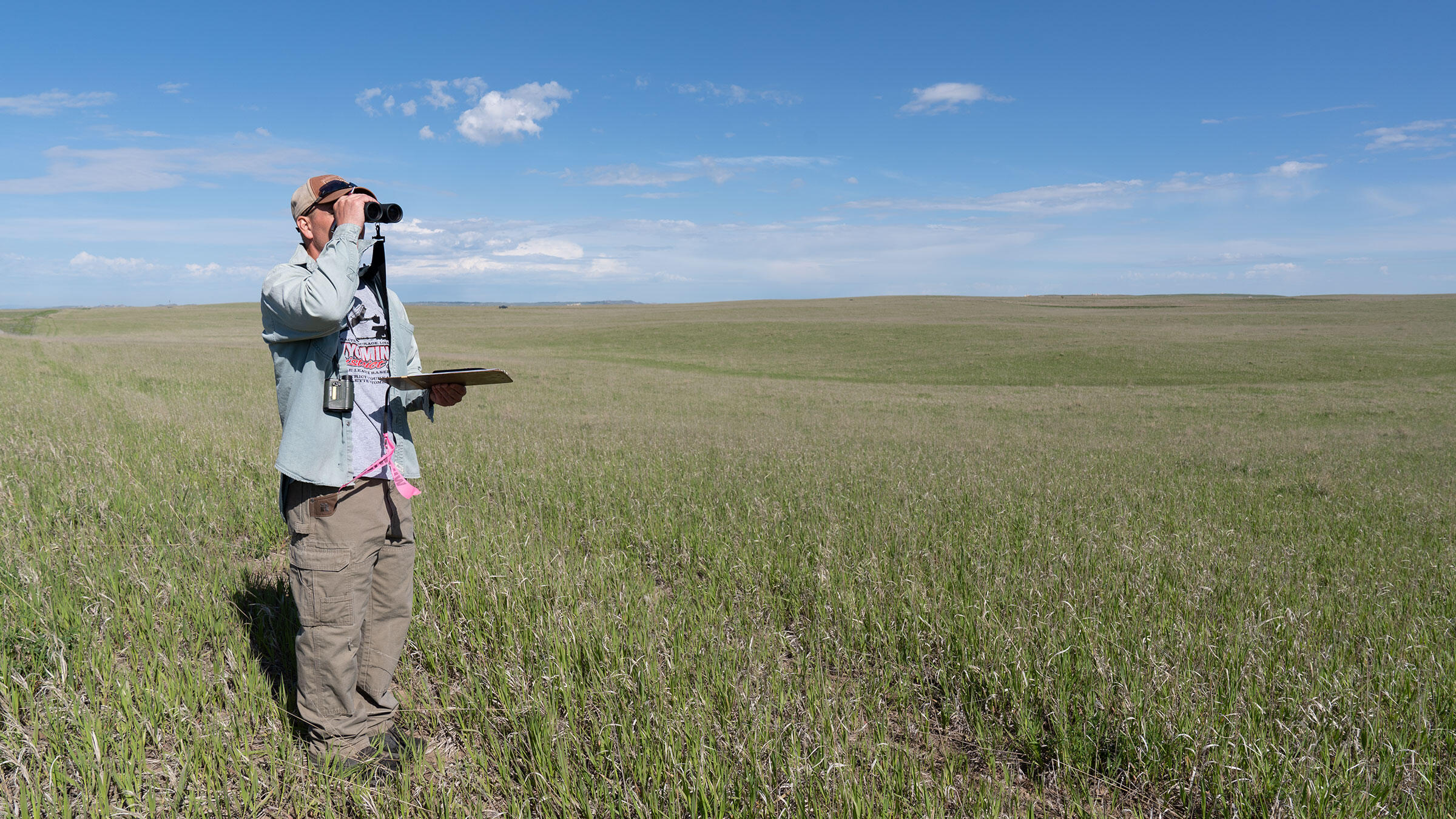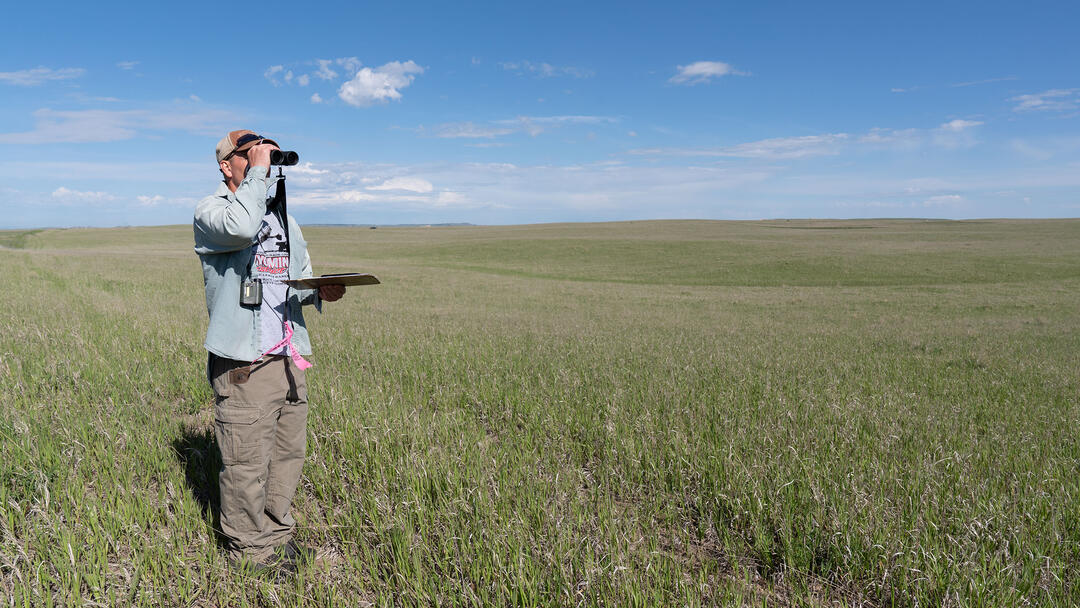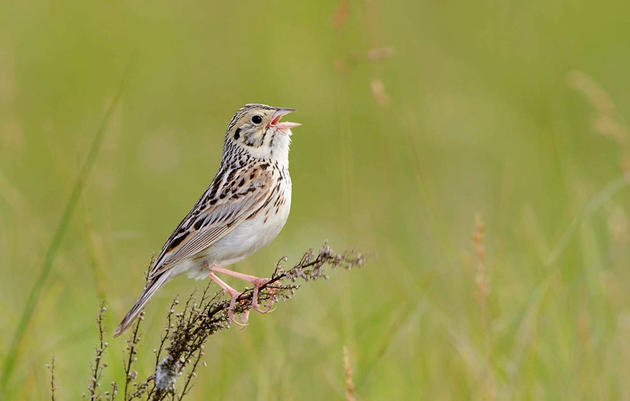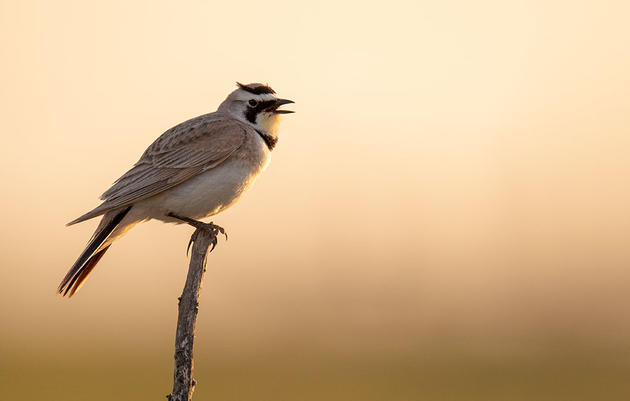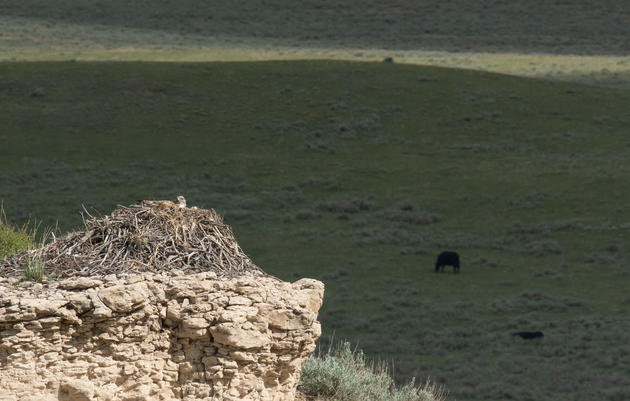Long before the sun rises on a June morning, Bill Vetter and Nichole Rubeck are driving down country roads in eastern Wyoming. They pull over; gather their binoculars, rangefinders, and clipboards; and walk off into the shortgrass prairie as the sky turns purple.
So begins a morning of bird monitoring for Audubon’s Conservation Ranching Initiative. Grassland birds in North America have declined by 40 percent since 1966 as a result of rapid habitat loss and fragmentation. Because 84 percent of grassland bird habitat is on private lands, the initiative partners with ranchers to help them protect and restore grassland bird habitat. To do this, Audubon works with every enrolled ranch to develop a habitat management plan.
To make sure these plans are working, Audubon conducts bird surveys on all certified ranches across the Midwest and western US. In Colorado, Wyoming, and Montana, Audubon Rockies contracts Precision Wildlife Resources, LLC, which is where Vetter and Rubeck come in.
From twilight through sunrise during the breeding season, they and the rest of their team survey birds using the Integrated Monitoring in Bird Conservation Regions Program protocol, established by the Bird Conservancy of the Rockies. The main method is point counts, which consists of navigating to specific points, standing still for six minutes, and recording the species and distance of every bird heard and seen.
Surveyors repeat this process at 8 to 16 points arranged in evenly-spaced grids. Two to seven grids are surveyed for each ranch, depending on the size of the ranch. The grids are placed randomly to avoid sampling bias.
Over time, the data collected from these surveys will allow Audubon to detect changes in the populations of birds breeding on certified ranches. This year, Audubon Rockies monitored birds on 12 ranches in Colorado, Wyoming, and Montana. Although it’s too early for any definitive results, the surveys have helped reveal some of the often-overlooked bird diversity on ranches. On the Downey Ranch in northeastern Wyoming, for example, Precision Wildlife Resources Bird Conservancy of the Rockies have documented 78 bird species.
Because bird populations are influenced by many factors, Audubon has also begun monitoring vegetation, which responds much more quickly to changes in cattle management. During the growing season, surveyors monitor grass and shrub cover and habitat structure. Data from these surveys will help ranchers determine which habitat types (for example, tall and shrubby areas) are present on their ranch and how to best manage them.
This year, Audubon Rockies began monitoring soil as well. Surveyors measure water’s ability to infiltrate soil. They also take soil cores to test for organic total carbon (as a measure of carbon sequestration, pH, nitrogen), as well as a biological soil microbial biomass indicator.
It may seem odd for a bird nonprofit to monitor soil, but soil is the foundation upon which an ecosystem depends. For example, soil’s ability to capture and retain water strongly affects how well the plants above it will grow, plants that both birds and cattle depend on.
Conservation ranching techniques have the potential to diversify habitat structure and increase soil health, root systems, and even carbon sequestration. It’s an exciting opportunity for ranchers to experiment with new techniques that benefit wildlife and the land itself, which in turn benefits the ranchers. However, we can only do that if ranchers are able to see the results of their management, which is why Audubon conducts monitoring.
“The more we learn about the ecology of our property and what we can do as managers to put that all in balance, it ends up being a win-win for both the livestock and the animals,” says Dan Lorenz, co-owner of Corner Post Meats, a ranch certified by Audubon’s Conservation Ranching Initiative.

